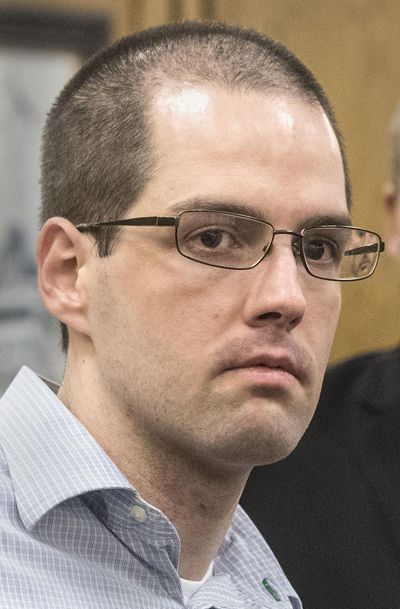Roy Murry triple-murder case goes to the jury

Jurors will now decide whether Roy H. Murry will spend the rest of his life in prison for a grisly triple murder or walk free from a prosecution that lacked direct evidence such as a murder weapon.
The jury began deliberations 3 p.m. Monday afternoon after weeks of testimony in the killings of Terry and Lisa Canfield, and John Constable.
During his closing arguments, Spokane County Prosecutor Larry Haskell told jurors how Murry’s troubled marriage turned deadly on May 26, 2015.
Murry “simply did not transition from his military experience,” Haskell said. “You’ve seen a Roy Murry who has twisted views of loyalty and trust.”
The day before the killings, Murry for the first time suggested divorce as an option for he and Amanda Murry, who has since divorced him and changed her name back to Constable.
“So instead of filing the paperwork, at which point he could have been rid of Amanda and her family, this is what he did,” Haskell said. “The state is not asking you to convict Mr. Murry because he is a gun owner or a prepper. But a lot of this shows how he thought.”
His military experience and ready access to a number of guns and ammunition put him in a unique position to pull off the crime without leaving a trace, Haskell said.
“He’s not stupid. Nobody on this panel should think that he’s not a thinker. He’s a planner. He’s a schemer,” Haskell said, “and a murderer.”
But defense attorneys Tom Krzyminski and Jill Gannon-Nagle hammered the state’s case and how it failed to provide any evidence that Murry shot and killed his wife’s family and then set the home and a barn on fire to destroy evidence.
They pointed out that forensic specialists tested soil found in Murry’s shoes and combat boots that conclusively showed it did not come from the crime scene. Tests also showed that the bullets used in the crime did not come from any gun Murry had in his possession or was known to own.
“It’s a story,” Krzyminski said of Haskell’s theory. “You have to decide whether you believe Mr. Haskell’s story. There is no direct evidence, well, arguably no direct evidence.”
Krzyminski acknowledged that his client loved guns and made people feel uncomfortable by spouting off his anti-government views within moments of meeting them. But no witnesses ever said Murry acted out against anything or anyone who angered him.
“How would you prove you were home alone? Did you hear any evidence that Roy Murry’s neighbors were talked to? Did any other neighbors see a car coming and going at a weird time of night?” he said. “Why weren’t those people talked to?”
Krzyminski said law enforcement, upon Amanda Murry’s suggestion, started looking at Murry and never looked away.
“Law enforcement thought all we have to do is sit back and let the evidence come in,” he said, “but it doesn’t.”
The state hinged its case on a few particles found on three .22-caliber gun casings found at the scene of the crime. Experts testified that the compounds were similar to a new type of lubricant that Murry had been working on with a business partner. A vial of the lubricant was found in his car upon his arrest.
But Gannon-Nagle pointed out that the analysis of the compounds on the shell casing could not identify it as coming from the vial of lubricant found in Murry’s possession.
Gannon-Nagle also reminded the jury that a male’s DNA was found under the fingernails of Lisa Canfield that was not Murry’s nor her single male client who received massages from her as part of her business.
More male DNA, from another man, was found on the gas spout used in the fire. It, too, was not Murry’s.
“Is that reasonable to believe that Mr. Murry could enter that crime scene and not pick up any DNA?” she said. “If Mr. Murry’s DNA had been found under the fingernails of Lisa Canfield, or on the gas spout or on the flare cap, the state would be saying, ‘There’s the proof.’ ”
The only “conclusive physical evidence excludes Mr. Murry,” Gannon-Nagle continued. “The evidence leaves you with reasonable doubt, so the defense asks you to find Mr. Murry not guilty.”